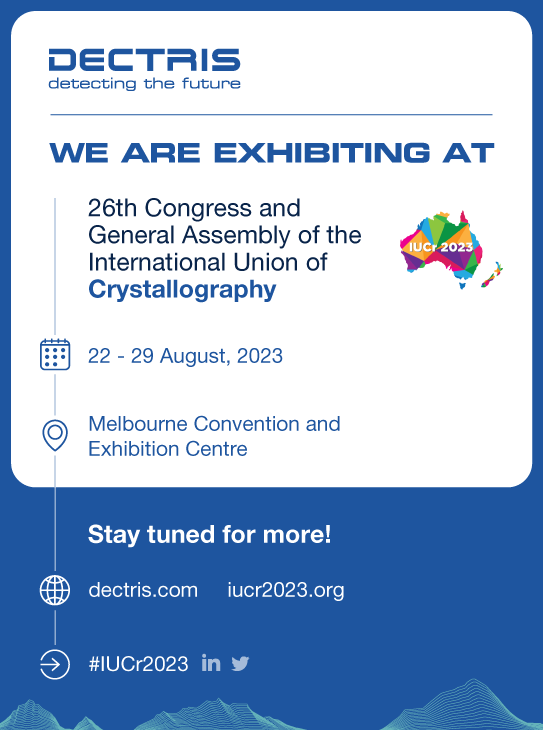


Editorial
Editorial
![Thumbnail [Thumbnail]](https://www.iucr.org/__data/assets/image/0011/155198/Editorial.gif)
Image made by WinXMorph by Werner Kaminsky.
This summer has been sweltering here in the UK, sometimes making it difficult to concentrate on work. Climate change? Probably, and this holds a warning to us all for the future. So what do we have in this issue of the IUCr Newsletter?
Now, as scientists, we expect to announce our discoveries to the rest of the world through publishing in legitimate science journals. We normally expect that papers that appear in journals and have been properly refereed can be trusted to be written in good faith so they can be treated as reliable. That, however, is an ideal, which sometimes is open to deception, and untrustworthy publications do appear from time to time that pollute the scientific literature. This is despite the fact that reputable journals, such as our IUCr journals, go to enormous efforts to maintain standards.
In recent years, there has been a growth in suspect articles being published. Sometimes this is simply a matter of incompetence of the authors, and referees have not spotted the errors. Referees are only human, aren’t they? But sometimes, there is a more malign reason. The pressures to publish as many papers as possible to gain job promotion or personal recognition are largely responsible for this. In April of this year, a paper appeared in which evidence of the existence was provided of a so-called “paper mill”, designed to create hundreds of fake manuscripts. You can read the original report here. Such material is challenging to track down especially as the articles often appear in many different journals. The publication of such dubious material has even affected the Cambridge Structural Database, where 992 recent crystal structure papers have been found across several journals, raising suspicions of “paper mill” activity. Fortunately, the CSD has excellent ways to detect them for the most part, but of course, one can never be certain that some may have crept through. I also recall that Armel Le Bail has been particularly active in finding many suspicious examples (see, for example, his “crystallographic horrors” at http://cristal.org/CHM/CHM.html). It is worrying to see publications like this polluting the scientific literature. I, too, have seen, while refereeing, some examples of identical powder diffraction patterns that have been repeated elsewhere, even though the authors claim to be studying different materials. This is something that journal referees need to be aware of these days. A recent research report on paper mills from the Committee on Publication Ethics (COPE) & STM gives an idea of the wider problem.
On a lighter note, it is great to see the steady development of crystallography growing within the African continent. Owing to the work of crystallographers such as Claude Lecomte and the IUCr, it has been possible to establish a Senegalese Crystallography Association. This can only bode well for the development of our science in Africa. I am proud of the role played in this by the IUCr.
The meetings of the IUCr Regional Associates are always a highlight of the crystallographer's year, and in 2022 we are delighted to congratulate the European Crystallographic Association on the occasion of their 25th anniversary. For those of you wondering how come we've already reached the 33rd European Crystallographic Meeting (ECM33), it's because the ECA succeeded the European Crystallographic Committee (ECC), which was founded 50 years ago at the very first ECM. Read more in ECA Vice-President Arie van der Lee's article here. During the ECM33 Opening Ceremony, Co-Chair Sylvain Ravy related how the ECM33 logo was inspired by the gardens at the 17th century Château de Versailles, close to the meeting venue, and went on to describe the types of symmetry exhibited by some of the gardens' features (see slides below). The ECA’s prestigious Perutz Prize went to Bill Clegg from Newcastle University (UK), a well-deserved winner for his contributions to crystal structure solution.
![[Slides]](https://www.iucr.org/__data/assets/image/0010/155197/slides.png)
The 72nd ACA Annual Meeting also returned to an in-person gathering in 2022 and hosted sessions – some hybrid – in an expanded range of disciplines. Read a report here. The IUCr awarded poster prizes at both ACA2022 and ECM33; many congratulations to the winners (shown below)!
![[ACA ECA poster prizes]](https://www.iucr.org/__data/assets/image/0009/155178/ACA-ECA-poster-prizes.png)
We look forward to the 17th Conference of the Asian Crystallographic Association, taking place in Jeju, Republic of Korea, from 30 October to 2 November 2022, and the 5th Meeting of the Latin American Crystallographic Association, which will be hosted by San José in Costa Rica from 28 to 30 November 2022.
Once again, the Hargittais have written an interesting article for the Newsletter, this time on the life of Don Caspar regarding his collaboration with the Nobelist Aaron Klug in connection with geodesic domes towards understanding virus structures. I always enjoy reading their contributions to the Newsletter.
Finally, in the previous issue of the Newsletter, Maureen Julian wrote about her experiences in Kathleen Lonsdale’s laboratory in the 1960s. She asks if anyone else can recall those times to contact her at [email protected].
Copyright © - All Rights Reserved - International Union of Crystallography








